1. Jackson WC, Tao Y, Mendiratta-Lala M, Bazzi L, Wahl DR, Schipper MJ, et al. Comparison of stereotactic body radiation therapy and radiofrequency ablation in the treatment of intrahepatic metastases. Int J Radiat Oncol Biol Phys. 2018; 100:950–958.

2. Lee MT, Kim JJ, Dinniwell R, Brierley J, Lockwood G, Wong R, et al. Phase I study of individualized stereotactic body radiotherapy of liver metastases. J Clin Oncol. 2009; 27:1585–1591.

3. Rusthoven KE, Kavanagh BD, Cardenes H, Stieber VW, Burri SH, Feigenberg SJ, et al. Multi-institutional phase I/II trial of stereotactic body radiation therapy for liver metastases. J Clin Oncol. 2009; 27:1572–1578.

4. Wahl DR, Stenmark MH, Tao Y, Pollom EL, Caoili EM, Lawrence TS, et al. Outcomes after stereotactic body radiotherapy or radiofrequency ablation for hepatocellular carcinoma. J Clin Oncol. 2016; 34:452–459.
5. Kim JH, Lee JY, Yu SJ, Lee DH, Joo I, Yoon JH, et al. Fusion imagingguided radiofrequency ablation with artificial ascites or pleural effusion in patients with hepatocellular carcinomas: the feasibility rate and midterm outcome. Int J Hyperthermia. 2023; 40:2213424.

6. Vouche M, Habib A, Ward TJ, Kim E, Kulik L, Ganger D, et al. Unresectable solitary hepatocellular carcinoma not amenable to radiofrequency ablation: multicenter radiology-pathology correlation and survival of radiation segmentectomy. Hepatology. 2014; 60:192–201.

7. Rim CH, Lee JS, Kim SY, Seong J. Comparison of radiofrequency ablation and ablative external radiotherapy for the treatment of intrahepatic malignancies: a hybrid meta-analysis. JHEP Rep. 2022; 5:100594.

8. Heimbach JK, Kulik LM, Finn RS, Sirlin CB, Abecassis MM, Roberts LR, et al. AASLD guidelines for the treatment of hepatocellular carcinoma. Hepatology. 2018; 67:358–380.

9. Korean Liver Cancer Association (KLCA); National Cancer Center (NCC) Korea. 2022 KLCA-NCC Korea practice guidelines for the management of hepatocellular carcinoma. J Liver Cancer. 2023; 23:1–120.
10. Weykamp F, Hoegen P, Klüter S, Spindeldreier CK, König L, Seidensaal K, et al. Magnetic resonance-guided stereotactic body radiotherapy of liver tumors: initial clinical experience and patient-reported outcomes. Front Oncol. 2021; 11:610637.
11. Jaffray DA, Siewerdsen JH, Wong JW, Martinez AA. Flat-panel conebeam computed tomography for image-guided radiation therapy. Int J Radiat Oncol Biol Phys. 2002; 53:1337–1349.

12. Lam KL, Ten Haken RK, McShan DL, Thornton AF Jr. Automated determination of patient setup errors in radiation therapy using spherical radio-opaque markers. Med Phys. 1993; 20:1145–1152.

13. Goodman KA, Kavanagh BD. Stereotactic body radiotherapy for liver metastases. Semin Radiat Oncol. 2017; 27:240–246.

14. Chang SD, Main W, Martin DP, Gibbs IC, Heilbrun MP. An analysis of the accuracy of the CyberKnife: a robotic frameless stereotactic radiosurgical system. Neurosurgery. 2003; 52:140–146. discussion 146-147.

15. Shirato H, Harada T, Harabayashi T, Hida K, Endo H, Kitamura K, et al. Feasibility of insertion/implantation of 2.0-mm-diameter gold internal fiducial markers for precise setup and real-time tumor tracking in radiotherapy. Int J Radiat Oncol Biol Phys. 2003; 56:240–247.
16. Chang SD, Adler JR. Robotics and radiosurgery--the cyberknife. Stereotact Funct Neurosurg. 2001; 76:204–208.
17. Moskalenko M, Jones BL, Mueller A, Lewis S, Shiao JC, Zakem SJ, et al. Fiducial markers allow accurate and reproducible delivery of liver stereotactic body radiation therapy. Curr Oncol. 2023; 30:5054–5061.

18. Oldrini G, Taste-George H, Renard-Oldrini S, Baumann AS, Marchesi V, Troufléau P, et al. Implantation of fiducial markers in the liver for stereotactic body radiation therapy: feasibility and results. Diagn Interv Imaging. 2015; 96:589–592.

19. Ohta K, Shimohira M, Iwata H, Hashizume T, Ogino H, Miyakawa A, et al. Percutaneous fiducial marker placement under CT fluoroscopic guidance for stereotactic body radiotherapy of the lung: an initial experience. J Radiat Res. 2013; 54:957–961.

20. Bertholet J, Worm E, Høyer M, Poulsen P. Cone beam CT-based set-up strategies with and without rotational correction for stereotactic body radiation therapy in the liver. Acta Oncol. 2017; 56:860–866.
21. Sotiropoulou E, Stathochristopoulou I, Stathopoulos K, Verigos K, Salvaras N, Thanos L. CT-guided fiducial placement for cyberknife stereotactic radiosurgery: an initial experience. Cardiovasc Intervent Radiol. 2010; 33:586–589.

22. Anstadt EJ, Shumway R, Colasanto J, Grew D. Single community-based institutional series of stereotactic body radiation therapy (SBRT) for treatment of liver metastases. J Gastrointest Oncol. 2019; 10:330–338.

23. Han S, Lee JM, Lee DH, Yoon JH, Chang W. Utility of real-time CT/MRI-US automatic fusion system based on vascular matching in percutaneous radiofrequency ablation for hepatocellular carcinomas: a prospective study. Cardiovasc Intervent Radiol. 2021; 44:1579–1596.

24. Lencioni R, Llovet JM. Modified RECIST (mRECIST) assessment for hepatocellular carcinoma. Semin Liver Dis. 2010; 30:52–60.

25. Clavien PA, Barkun J, de Oliveira ML, Vauthey JN, Dindo D, Schulick RD, et al. The Clavien-Dindo classification of surgical complications: fiveyear experience. Ann Surg. 2009; 250:187–196.
26. Backlund EO, Johansson L, Sarby B. Studies on craniopharyngiomas. II. Treatment by stereotaxis and radiosurgery. Acta Chir Scand. 1972; 138:749–759.
27. Lohr F, Debus J, Frank C, Herfarth K, Pastyr O, Rhein B, et al. Noninvasive patient fixation for extracranial stereotactic radiotherapy. Int J Radiat Oncol Biol Phys. 1999; 45:521–527.

28. Miura H, Doi Y, Nakao M, Ozawa S, Kenjo M, Nagata Y. Interfractional liver positional motion under exhaled breath holding based on cone beam computed tomography. In Vivo. 2023; 37:1822–1827.

29. Kim JH, Hong SS, Kim JH, Park HJ, Chang YW, Chang AR, et al. Safety and efficacy of ultrasound-guided fiducial marker implantation for CyberKnife radiation therapy. Korean J Radiol. 2012; 13:307–313.

30. Ohta K, Shimohira M, Murai T, Nishimura J, Iwata H, Ogino H, et al. Percutaneous fiducial marker placement prior to stereotactic body radiotherapy for malignant liver tumors: an initial experience. J Radiat Res. 2016; 57:174–177.
31. Kothary N, Heit JJ, Louie JD, Kuo WT, Loo BW Jr, Koong A, et al. Safety and efficacy of percutaneous fiducial marker implantation for image-guided radiation therapy. J Vasc Interv Radiol. 2009; 20:235–239.

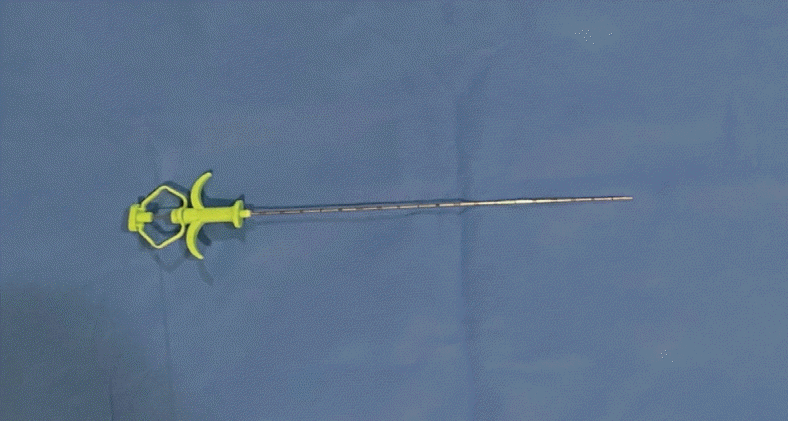

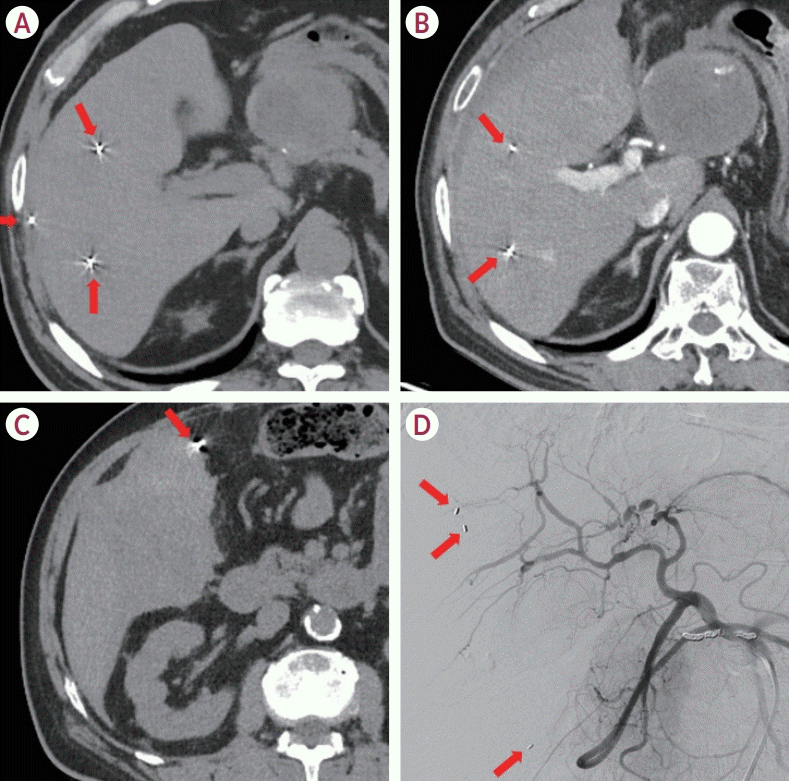
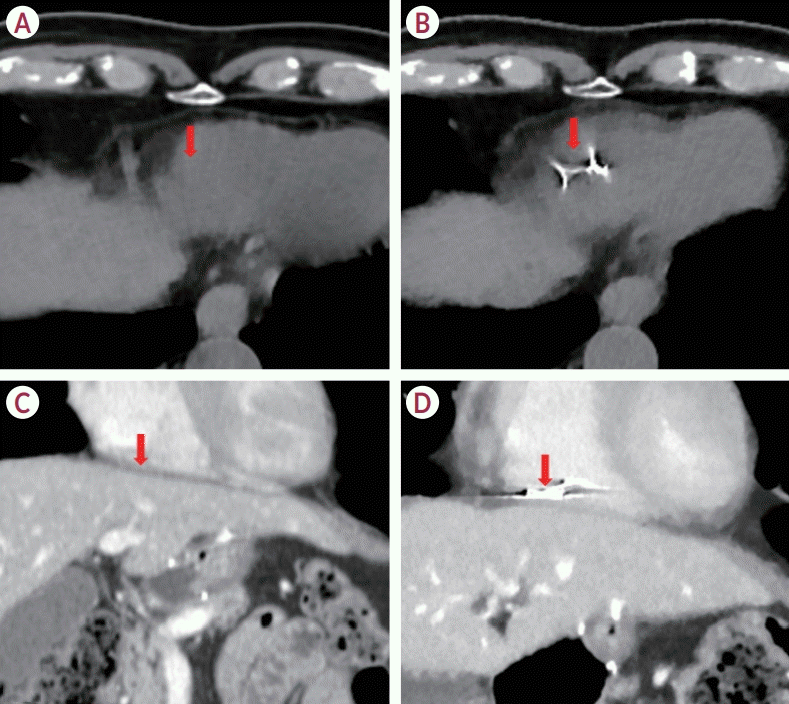
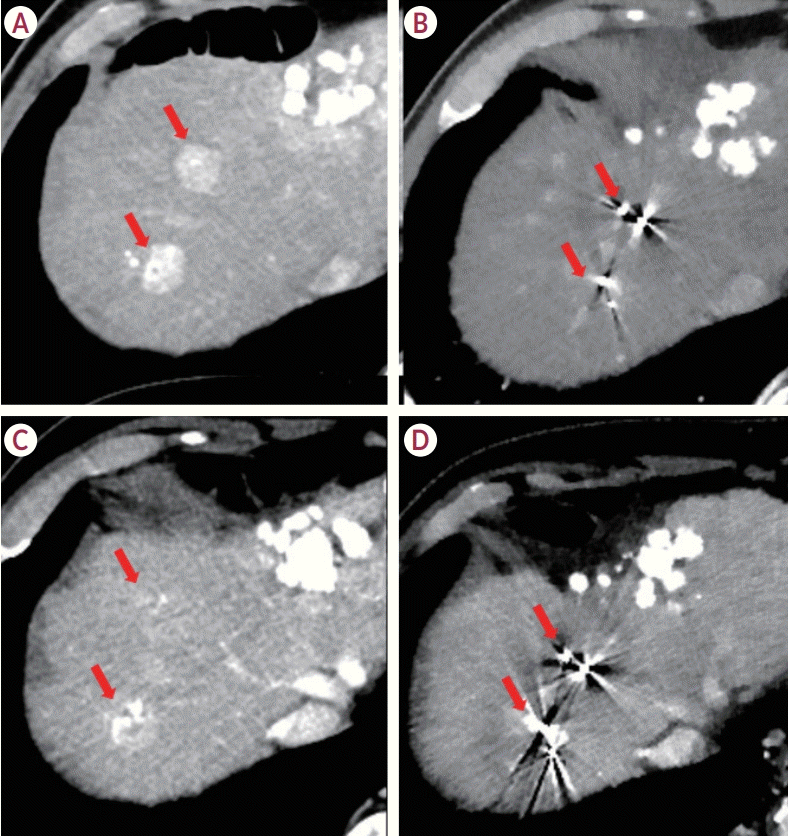




 PDF
PDF Citation
Citation Print
Print




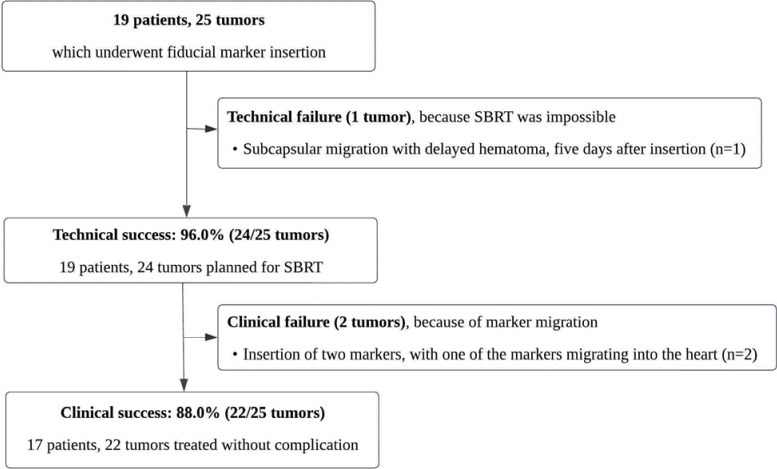
 XML Download
XML Download